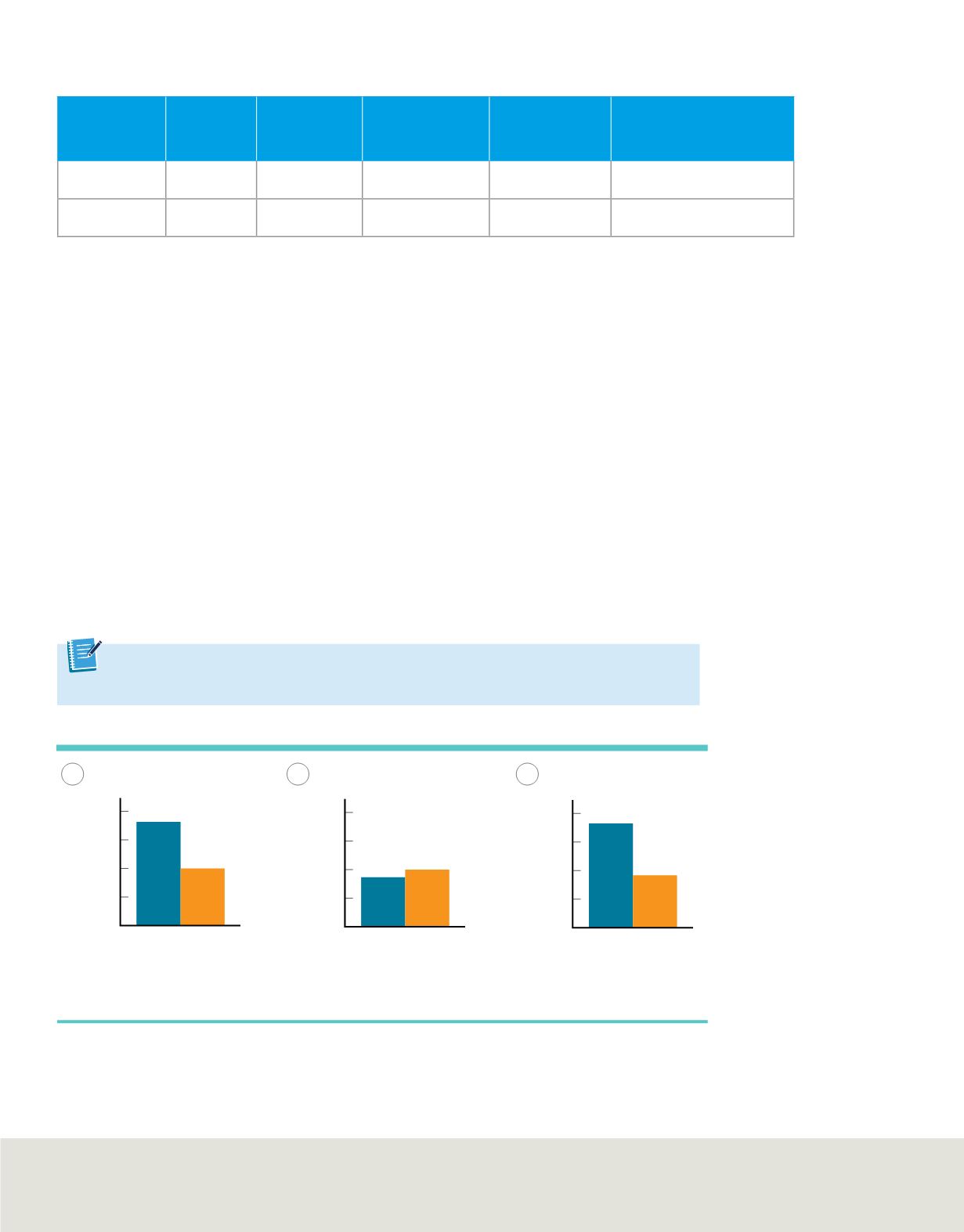

1.000
2.000
Mass (g)
1.000
2.000
Mass (g)
Cu
CI
Cu CI
Compound I
Compound II
1.000
2.000
Mass (g)
1.000
2.000
Mass (g)
1.000
2.000
Mass (g)
Cu
CI
Cu CI
I
II
Compound I
Compound II
Mass Ratio
Comparison
C03_037A
1.000
2.000
Mass (g)
1.000
2.000
Mass (g)
1.000
2.000
Mass (g)
Cu
CI
Cu CI
I
II
Compound I
Compound II
Mass Ratio
Comparison
Table 4
Analysis Data of Two Copper Compounds
Compound % Cu
% Cl
Mass Cu (g) in
100.0 g of
Compound
Mass Cl (g) in
100.0 g of
Compound
Mass Ratio
I
64.20
35.80
64.20
35.80
II
47.27
52.73
47.27
52.73
b
a
c
Figure 17
Copper and chlorine can form different compounds.
Bar graph
a
compares the
relative masses of copper and
chlorine in Compound I.
Bar graph
b
compares the
relative masses of copper and
chlorine in Compound II.
Bar graph
c
shows a compari-
son between the relative
masses of copper in both
compounds. The ratio is 2:1.
Compounds made of copper and chlorine
In another example, copper (Cu) reacts
with chlorine (Cl) under different sets of conditions to form two different compounds.
Table 4
provides an analysis of their compositions. How can you tell that the
compounds are different?
The two copper compounds must be different because they have different percents by
mass. Compound I is composed of 64.20% copper, but Compound II contains only
47.27% copper. Compound I contains 35.80% chlorine, but Compound II contains
52.73% chlorine.
Using
Figure 17
and
Table 4
, compare the ratio of the mass of copper to the mass of
chlorine for each compound. Notice that the mass ratio of copper to chlorine in Compound
I (1.793) is exactly 2 times the mass ratio of copper to chlorine in Compound II (0.8964).
Get It?
Explain
why the ratio of relative masses of copper in both compounds is 2:1.
1.793 g Cu
_______
1 g Cl
0.8964 g Cu
_________
1 g Cl
mass ratio of Compound I
______________________
mass ratio of Compound II
=
1.793 g Cu/g Cl
_________________
0.8964 g Cu/g Cl
=
2.000
(
mass Cu
______
mass Cl
)
66
Module 2 • Matter—Properties and Changes









